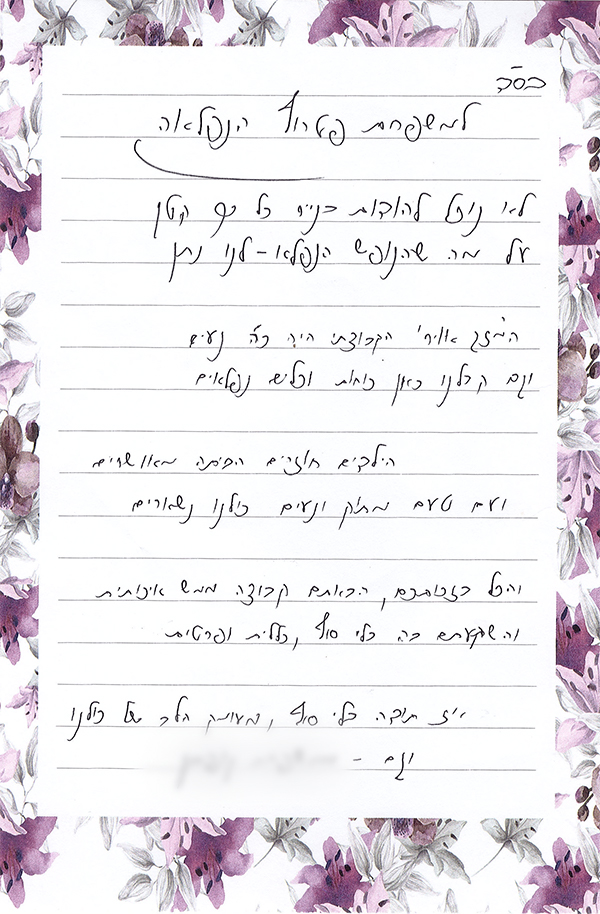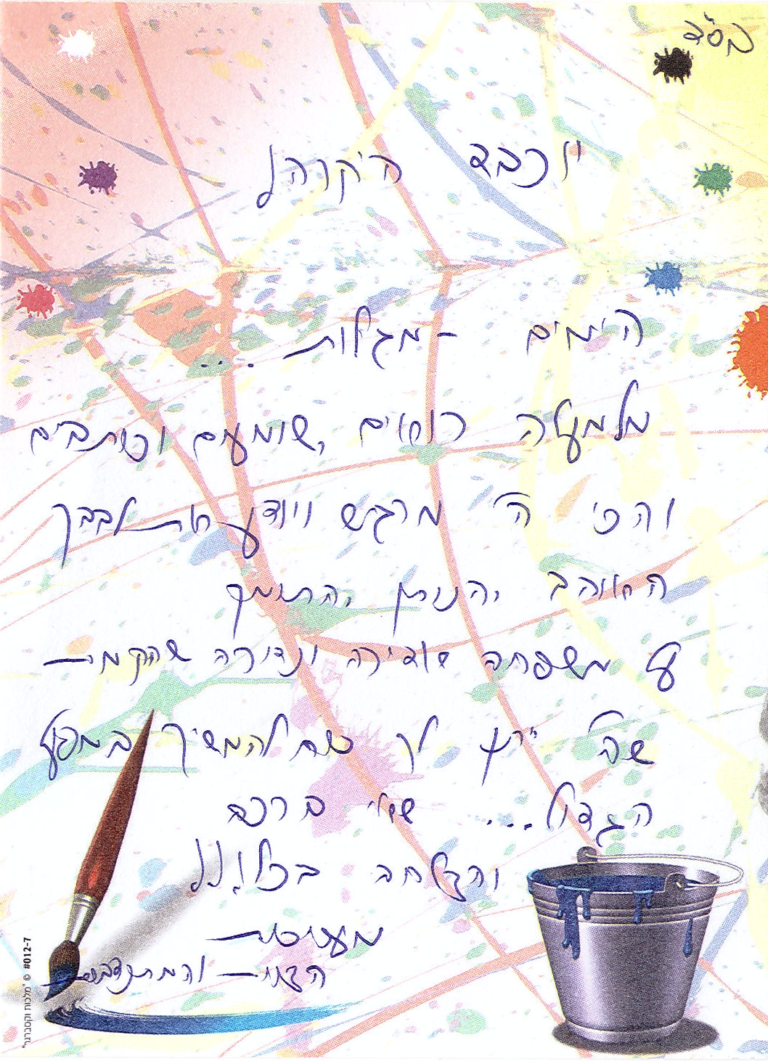“Noshmim Lirvacha” is a registered nonprofit organization founded by a group of parents of ventilated children who recognized the lack of support available for families like theirs.
The organization serves as a unifying community for families with a ventilated member, whether with a tracheostomy (cannula) or external respiratory support. Its mission is to promote and advance all areas that can contribute to the well-being of the patients and their families.
A ventilator connected via a mask to the nose and sometimes also to the mouth, or through a direct connection to the trachea via a tube or tracheostomy, operating with positive pressure – by pushing air into the patient’s airways.
A device that measures blood oxygen saturation levels. Most devices also measure heart rate (a device with this feature is called a pulse oximeter).
A surgical procedure in which a hole is made in the neck, and a tube is inserted into the trachea to connect it to external air.
A term for a tube inserted into the trachea that allows both connection to a ventilator and airflow bypassing the upper airways.
A sensor that connects the oximeter/monitor to the patient. Most sensors come in the form of a sticker or adhesive that attaches to the finger or wrist or ankle.
The process of suctioning liquid secretions – saliva and mucus – from the airways, the cannula, the nose, or the mouth.
A manual ventilation device that creates positive pressure during ventilation when the Ambu bag is squeezed. The Ambu can be connected to the patient using a mask that covers the mouth and nose or through a connector that attaches directly to the tracheostomy.
When solids, liquids, or saliva enter the trachea instead of the esophagus.
A thin, flexible tube that connects to the suction device. Its purpose is to suction mucus from the tracheostomy, mouth, and nose.
A filter that connects to the ventilator tube, designed to capture moisture expelled from the airways, thus enriching the air returning to the trachea with moisture (the filter is used when there is no connection to a humidifier).
A device that connects to the ventilator tube, containing a water reservoir and a plate that heats the water. The light steam rising from the water enriches the air passing through the ventilator tube towards the patient with moisture.
The tracheostomy tube coming out of place. This can either be involuntary, requiring immediate re-insertion, or planned by a doctor when it is no longer needed.
A thin assistive rod that enters the tracheostomy tube and provides it with some rigidity. It is used only during the insertion of the cannula into the tracheostomy opening (it must be removed immediately after the insertion is complete, as it completely blocks the airflow entry from the tracheostomy while inside!).
A sterile saline solution used during suctioning to soften the mucus.
Fluids that are produced in the lungs and trachea, expelled during coughing or removed using suction.
A unidirectional valve that connects to the tracheostomy, causing inhaled air to exit around the tracheostomy and then through the vocal cords, instead of exiting through the tracheostomy itself. This way, the airflow through the vocal cords produces sound.
In 2013, it was reported by Kupot Cholim and the Ministry of Health that there were about 500 patients on ventilators being treated at home across the country, both children and adults. Since then, in 10 years, the numbers have doubled!
There are approximately 500 children and 500 adults in the country who are on home ventilation.
The organization operates across the entire country. The families of the organization are spread across more than 28 cities and towns.
The organization has over 60 volunteers with medical-professional training.
The organization holds family gatherings and retreats throughout the year.
Institution or Home?
Is invasive ventilation reversible?
What are common complications in ventilated patients?
Is it possible to speak despite the tracheostomy and ventilation?
What are the rights of a ventilated patient?
How are ventilators etc. used on Shabbat?
What can be done to minimize the risk of pneumonia in ventilated patients?
What does the ventilator do?
How does the presence of a ventilated child affect the home and family?
Is it possible to take a ventilated patient on trips and vacations?
Home-ventilated patients have different rights that allow a wide range of assistance through the National Insurance Institute, health funds, the Ministry of Welfare, the Ministry of Housing, and more.
You are invited to check what you are entitled to and what you are receiving.



